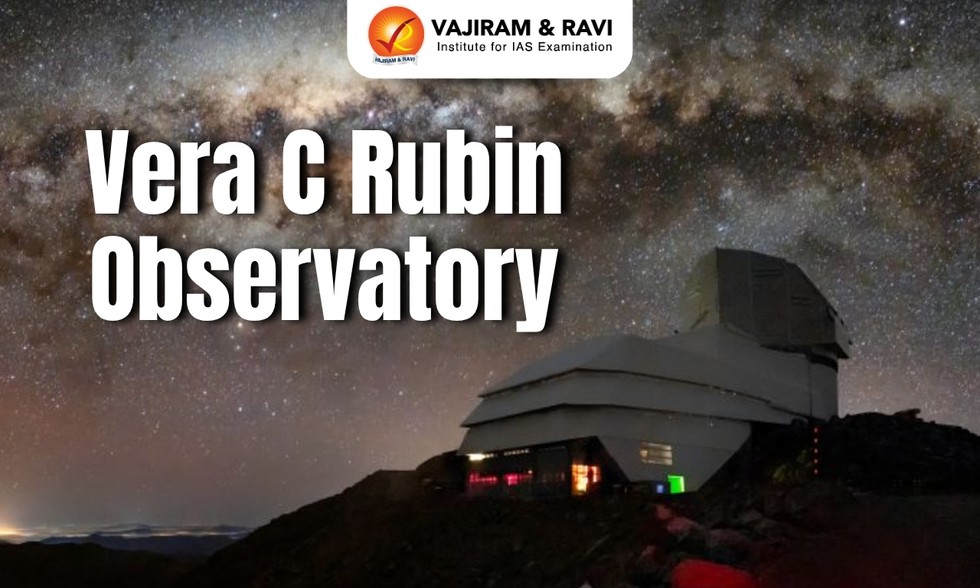About Vera C Rubin Observatory:
- It is located 8,684 feet above sea level atop the Cerro Pachónmountain in the Chilean Andes.
- Cerro Pachón was selected as the site for Rubin Observatory because it’s an excellent place to conduct high-quality astronomical and astrophysical science.
- It is named after American astronomer Vera C Rubin, who provided evidence about dark matter for the first time in the 1970s
- It is partnered with the S. Department of Energy (DOE) and National Science Foundation (NSF).
- This observatory will provide comprehensive images of the night sky unlike anything astronomers have seen before.
- It will constantly scan the sky of the southern hemisphere for 10 years, gathering 20 terabytes of astronomical data each night.
- The observatory’s software will automatically compare new images with older ones and generate an estimated 10 million alerts per night for each change detected in the sky.
- The centrepiece of the observatory is the Simonyi Survey Telescope. This device is unique for three main reasons.
- Wide Field View: Astronomers typically use the size of the visible surface of the full Moon to describe a telescope’s field of view. The Hubble Space Telescope observes around 1% of the full Moon’s disc, and the James Webb Space Telescope around 75% — using such telescopes is like looking into space through a straw.
- Largest Digital Camera: The telescope has the world's largest digital camera, which is the size of a small car, weighs 2,800 kg, and boasts a staggering resolution of 3,200 megapixels.
- Rapid Movement: The Simonyi Survey Telescope is the fastest-slewing telescope in the world, and takes just five seconds to move and settle from one target to another. This speed is due to the telescope’s compact structure (owing to the three-mirror design), and its mount which floats on a film of oil.
- The observatory will also play a crucial role in expanding our knowledge about the nature of dark matter and dark energy.
- While galaxies, stars, and planets make up 5% of the universe, dark energy makes up about 68%, and dark matter about 27%.
